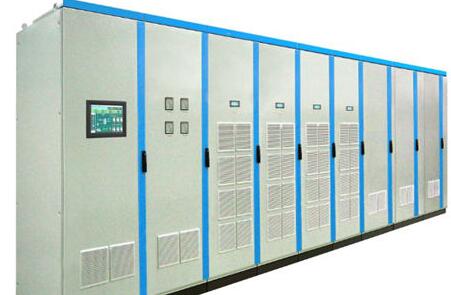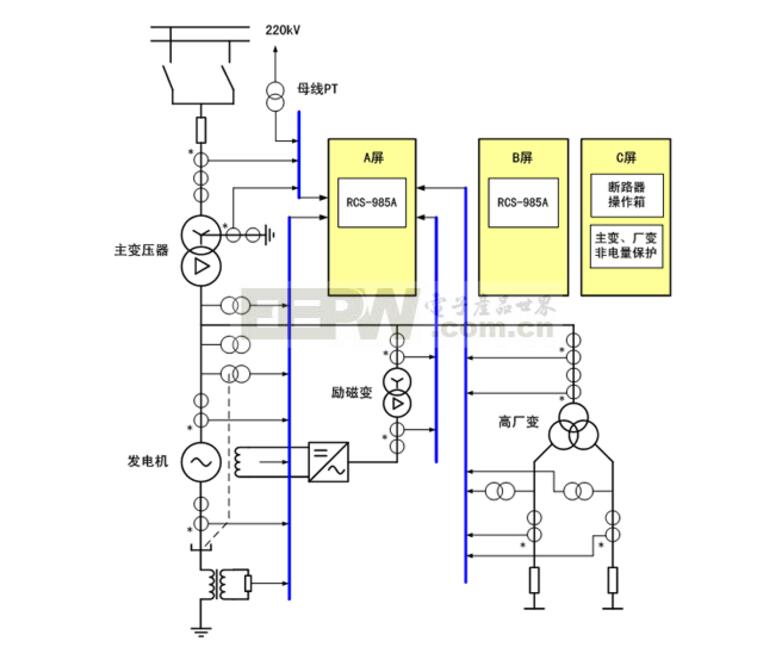The power supply and its accessory equipment for supplying the synchronous generator excitation current are collectively referred to as the excitation system. It is generally composed of two main parts: excitation power unit and excitation regulator. The excitation power unit supplies the excitation current to the rotor of the synchronous generator; the excitation regulator controls the output of the excitation power unit based on the input signal and the given regulation criteria. The excitation system's automatic excitation regulator has a considerable effect on improving the stability of the power system's parallel group. In particular, the development of modern power systems has led to a trend toward a reduction in the stability of the unit, and has also contributed to the continuous development of excitation technology.
Excitation system characteristics1, voltage regulation
The automatic adjustment of the excitation system can be seen as a negative feedback control system in which the voltage is regulated. Reactive load current is the main cause of the voltage drop at the generator terminal. When the excitation current is constant, the terminal voltage of the generator will decrease as the reactive current increases. However, in order to meet the user's requirements for power quality, the terminal voltage of the generator should remain basically unchanged. The way to achieve this requirement is to adjust the excitation current of the generator with the change of the reactive current.
2, reactive power
When the generator is in parallel operation with the system, it can be considered as a bus operation with an infinitely large-capacity power supply. To change the excitation current of the generator, the induced potential and the stator current also change, and the reactive current of the generator also changes. When the generator is operated in parallel with an infinite capacity system, in order to change the reactive power of the generator, the excitation current of the generator must be adjusted. The alternator excitation current at this time is not what is commonly referred to as “regulation,†but simply changes the reactive power fed into the system.
3, reactive power load
The generators operating in parallel will distribute the reactive current according to their rated capacity. Large-capacity generators should bear more reactive loads, while smaller-capacity generators provide less reactive power. In order to realize the automatic distribution of reactive load, it is possible to change the excitation current of the generator to maintain its terminal voltage constant through an automatic high-voltage excitation device, and to adjust the slope of the voltage regulation characteristics of the generator so as to realize the parallel operation of the generator. Reasonable distribution of reactive power.

The synchronous generator is the main equipment of the power system. It is a device that converts the mechanical power in a rotating form into electromagnetic power. In order to accomplish this conversion, it needs a DC magnetic field itself. The DC current that generates this magnetic field is called a synchronous generator. Excitation current. The relevant equipment that provides the excitation current specifically for the synchronous generator, that is, the establishment, adjustment of the excitation voltage, and related equipment that causes the voltage to disappear, are collectively referred to as the excitation system. The excitation system of a synchronous generator consists of an excitation regulator AER and an excitation power system. The excitation power system provides DC excitation current to the synchronous generator rotor excitation winding. The regulator controls the output of the excitation power system according to the voltage change at the generator terminal so as to achieve the purpose of adjusting the excitation current.
What is the use of the generator excitation system?1. According to the change of the generator's own load, adjust the current accordingly, and maintain the voltage as the normal stable voltage.
2. Control the voltage distribution among the various generators to ensure that the reactive power between the generators is minimized.
3. When the generator fails, the excitation system can be de-energized for this purpose, and the failure can be interrupted for the first time.
4, the excitation system can be based on the factory conditions, the maximum or minimum excitation limit of the generator.
Generator excitation circuit
The generator stator windings (1) (white), (2) (yellow) terminals are voltage detection output lines, which provide the power supply voltage of IC2 and the detection voltage of IC1. When the voltage increases, IC2 turns on and deepens, IC2 ( NE555) The pulse width of the output square wave becomes narrower, and the excitation current becomes smaller, so that the generator output voltage becomes lower. Conversely, it becomes higher.
(3), (4) (blue line) terminal provides excitation power, actual measurement is AC110V; (7), (8) (green/white) terminal is the permanent magnet motor output line of the engine, providing excitation for the initial operation of the generator Current. Since this circuit uses a field effect transistor IRF350 as the switching output, the temperature rise is lower at full load output.
The parts of the circuit can be soldered on a 55mmx70mm porous universal circuit board. The W1 is adjusted so that the no-load output is 400v. After the debugging is completed, the silicone strip is dropped to prevent the parts from being loosened. The circuit board and transformer B1 fit exactly into the original module position.

led grow light bar, horticulture lighting, quantum board driver, 1200W LED Driver, 720W led grow light
ShenZhen Fahold Electronic Limited , https://www.fahold.net